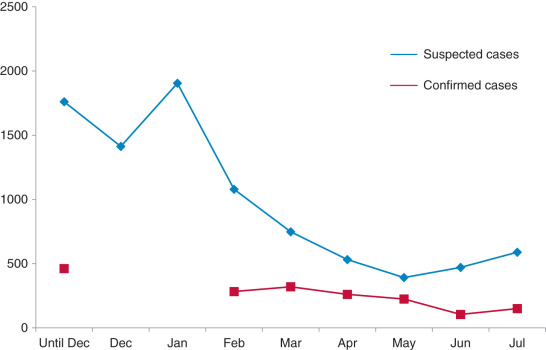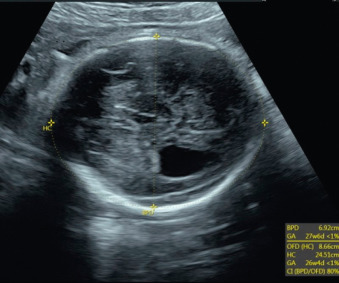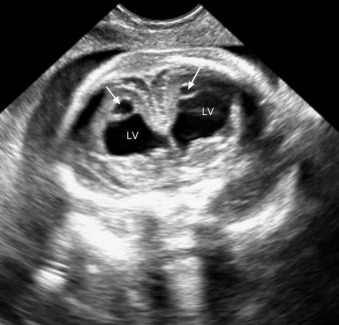Abstract
Zika virus is a novel mosquito-born virus that causes a broad range of fetal neurologic damage when maternal infection occurs in pregnancy. The effects can be similar to other intrauterine infections (TORCH).
Keywords
Zika virus, congenital Zika virus syndrome, Zika virus associated microcephaly
Introduction
Every few years the threat of a “new” infectious disease becomes the center of world attention, producing waves of fear and even mass panic. Until now, at least in the beginning, these diseases affected only adult populations. Although, since the Yap island epidemic in 2007, Zika virus (ZIKAV) was known to be able to produce epidemics, it remained unknown for the general population at large as well as for most of the medical profession. The situation changed in October and November of 2015 when it appeared in Brazil in the form of the “neonatal microcephaly epidemic.” The disproportionally large number and the severity of the cases affecting newborns brought the epidemic to the center of world attention, with countless articles in the press and in social/electronic media. By August 2016 the current epidemic has extended to immunologically naive populations in 67 countries.
Quite rapidly it became apparent that the easily diagnosed microcephaly was only a first sign of severe brain involvement and imaging descriptions of the different brain pathologies associated with congenital Zika virus syndrome (CZVS) started to be reported. By the time of this writing in 2016, 20 countries have reported CZVS cases. In four of these countries, the cases resulted from travel-related infections.
Questions regarding the different ways of transmission arose:
- •
What is the possibility of transmission by other Aedes species, especially the more prevalent and longer-lived Aedes albopictus (Asian tiger mosquito)?
- •
If currently only the most severe cases are being diagnosed, what is the full extent of fetal brain damage?
- •
Are there available treatment options?
Disorder
Definition
CZVS is defined as an intrauterine insult affecting mainly, but not only, the brain, and characterized by arrest of development and even destruction of different portions of the cerebrum and cerebellum. ZIKAV is a ribonucleic acid mosquito-borne virus of the Flavivirus genus closely related to yellow fever, dengue, tick-borne encephalitis virus, chikungunya, and West Nile viruses. In adults and children, it may be either asymptomatic or cause a mild disease with fever, erythema, and arthralgia, or in its severe form cause Guillain-Barré syndrome.
Prevalence and Epidemiology
Data regarding the prevalence and epidemiology of ZIKAV shows that once the disease starts to spread in a particular region, almost 80% of the population is infected but only around 20% have clinical disease. Using a theoretic model based on more of 30,000 cases in French Polynesia, Kucharski et al. found that an estimated 94% (95% confidence interval, 91–97%) of the total population of the six archipelagos were infected during the outbreak. The outbreak ended after 5–6 months, and since then there were no newly reported cases. The authors concluded that based on the demography of French Polynesia, the results imply that if ZIKAV infection provides complete protection against future infection, it would take 12–20 years before there are a sufficient number of susceptible individuals for ZIKAV to reemerge. This interesting point is also apparently applicable to the Yap epidemic, but still needs to be proved in noninsular countries.
In Brazil, until May 2016 there were 174,003 reported cases for an incidence of 85.1 : 100,000 inhabitants. By August 20, 2016, the total number of children suspected to be infected and have CZVS was 9091 ; with 2968 of them being still investigated. Out of 6123 fully investigated cases, the diagnosis was confirmed in 1854 (30%) children including 129 (7%) cases of fetal or neonatal death. In only 51 cases was the diagnosis made using specific criteria (either serology or polymerase chain reaction [PCR]). According to these reports the number of declared and confirmed cases has decreased in the last months ( Fig. 166.1 ).

From Brazil, the ZIKAV traveled north, affecting fetuses and children and reaching the continental United States of America through Miami, where there were 29 cases of autochthonous infections reported by August 24, 2016.
Etiology and Pathophysiology
ZIKAV is transmitted by the bite of mosquitos of the Aedes species, mainly by Aedes Aegypti; in addition, there are reports of transmission through sexual intercourse and probably also through blood products. It can also be transmitted vertically from pregnant women to their fetuses.
As with other intrauterine infections (IUI), the virus enters the fetus after infecting the placenta. The central nervous system (CNS) infection is facilitated by the fact that the blood-brain barrier is not yet functional. Tang et al. showed that ZIKAV infects human embryonic cortical neural progenitor cells, multiplying in these cells and causing their death. Adult neurons and astrocytes can also be infected.
Although until now most of the reported cases involved severely affected fetuses and newborns, it will not be surprising if cases with less severe pathologic features are diagnosed in the near future, as with cytomegalovirus (CMV) and toxoplasmosis.
Manifestations of Disease
Clinical Presentation
A history of a febrile disease accompanied by arthralgia, rash, and conjunctivitis may be obtained in some patients, but many cases remain asymptomatic. The risk to develop severe complications is estimated to be low.
Most of the cases diagnosed postpartum are recognized by the presence of microcephaly, usually severe with small fontanels, narrow sutures, and an abnormal head shape. In the absence of microcephaly, the diagnosis is more difficult and may be suspected by the presence of various degrees of ventriculomegaly, abnormal eyes, and limb abnormalities such as arthrogryposis. Asymptomatic or mild involvement following transmission to the fetus have not yet been reported.
Maternal serologic diagnosis is predominantly based on PCR or immunoglobulin M testing, based on timing since exposure or symptoms. As those clinical pathways are rapidly changing in response to new data, clinicians should consult local public health departments or the World Health Organization, Centers for Disease Control, or other authoritative web resources for current information.
Imaging Technique and Findings
Ultrasound.
CNS findings include the following :
- •
microcephaly ( Fig. 166.2 )

Fig. 166.2
Congenital Zika virus syndrome at 31.6 weeks’ gestation. The head circumference is 24.5 cm, −3.5 SD below the norm for the gestational age. The lateral ventricle measurement is 13 mm.
- •
ventriculomegaly, sometimes asymmetric (see Figs. 166.2 and 166.3 )











